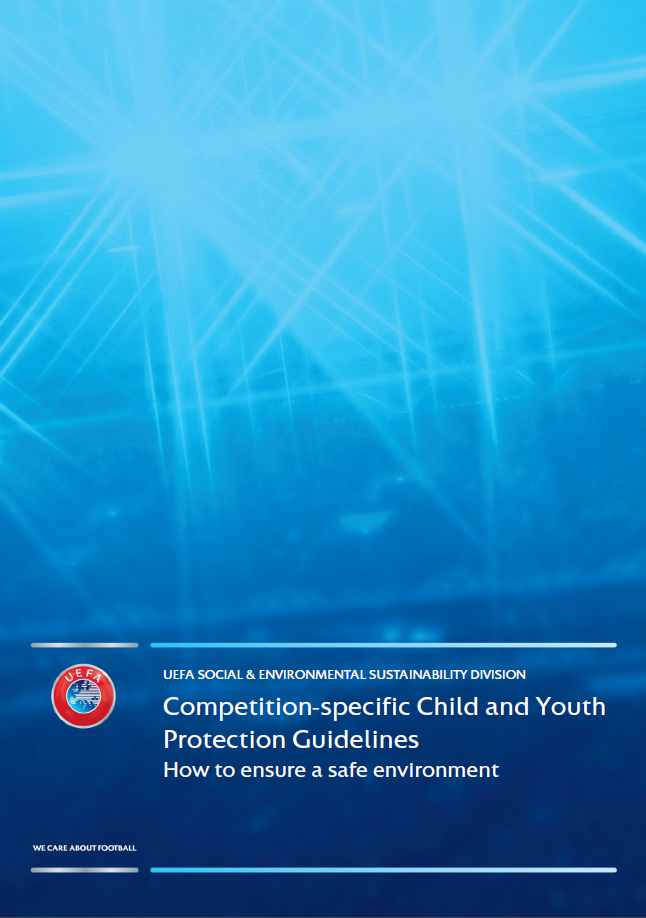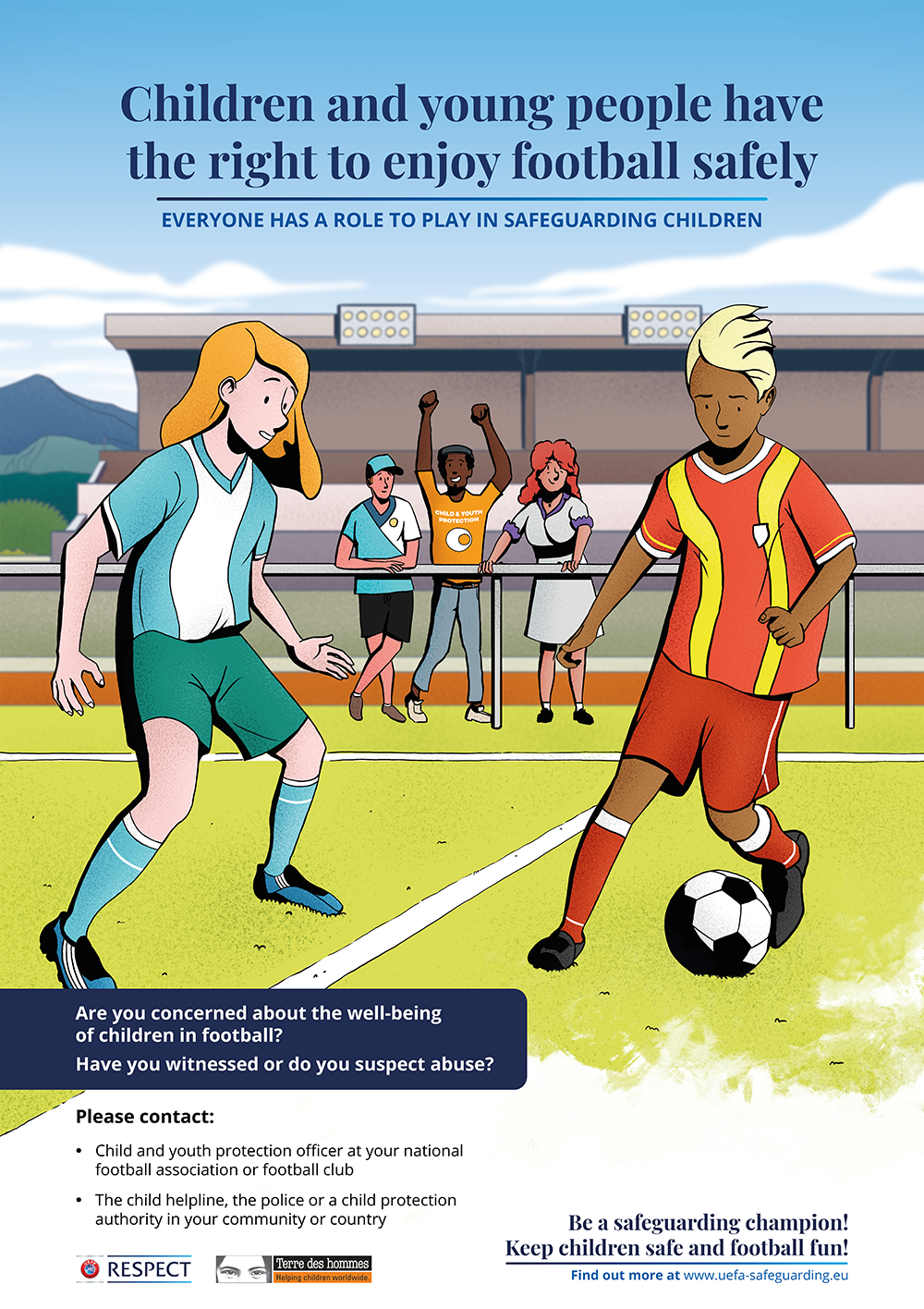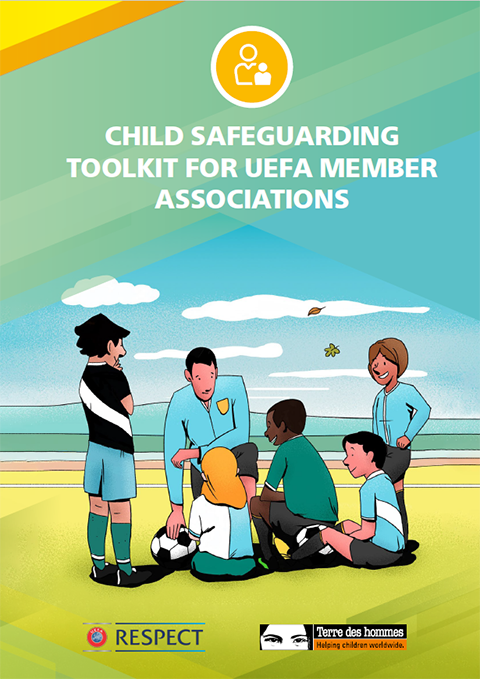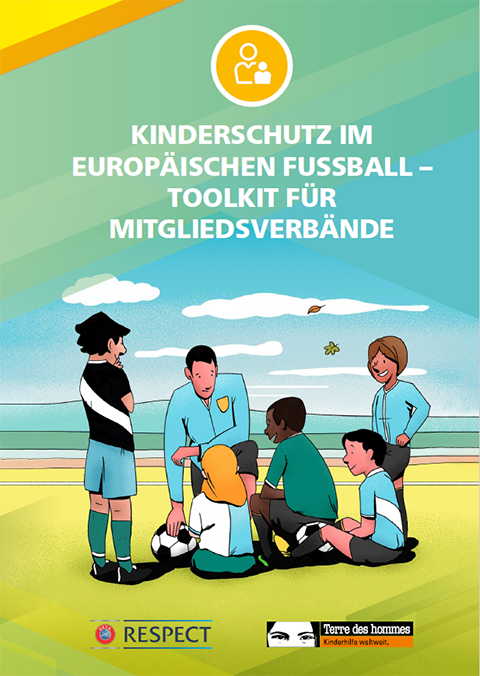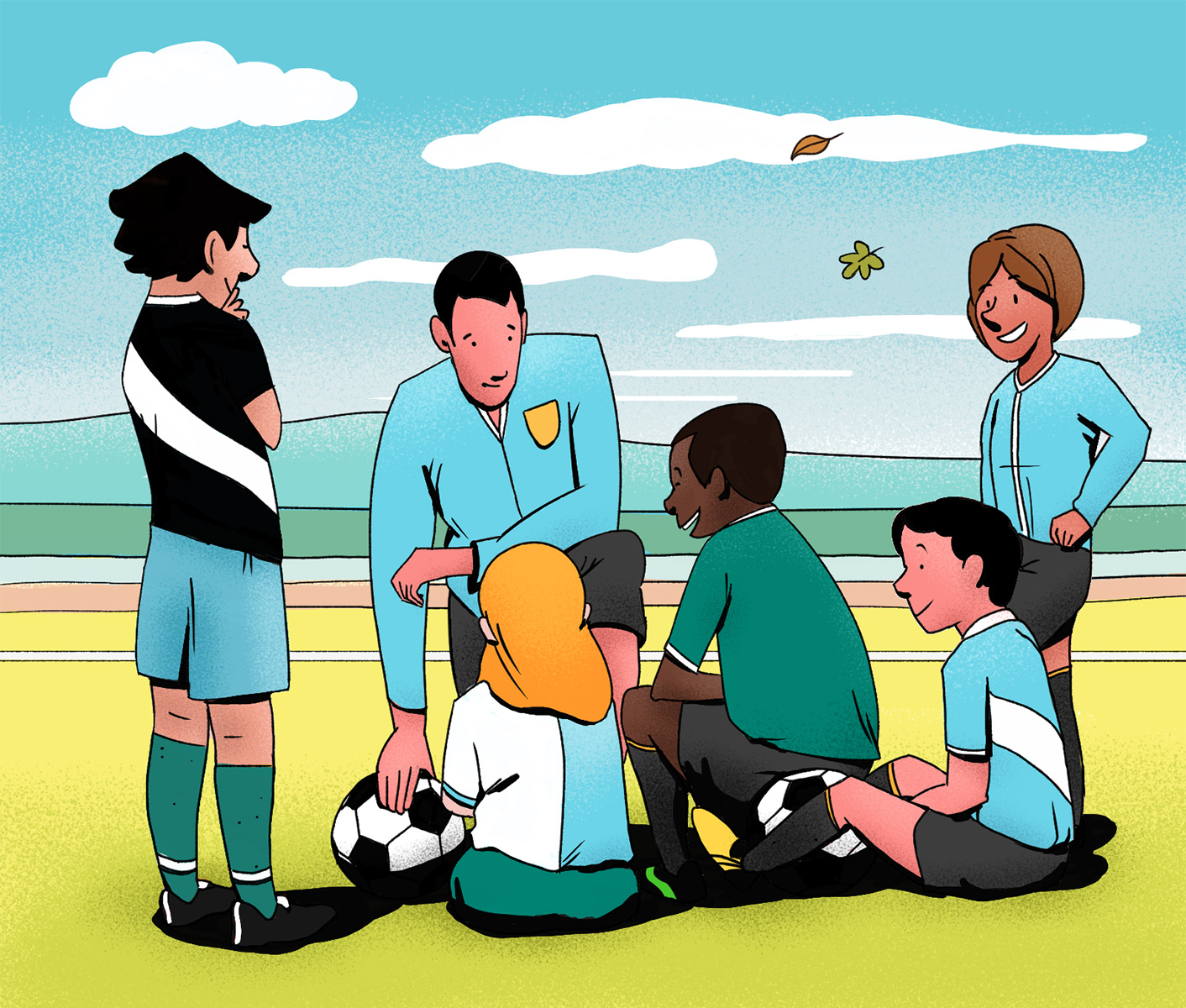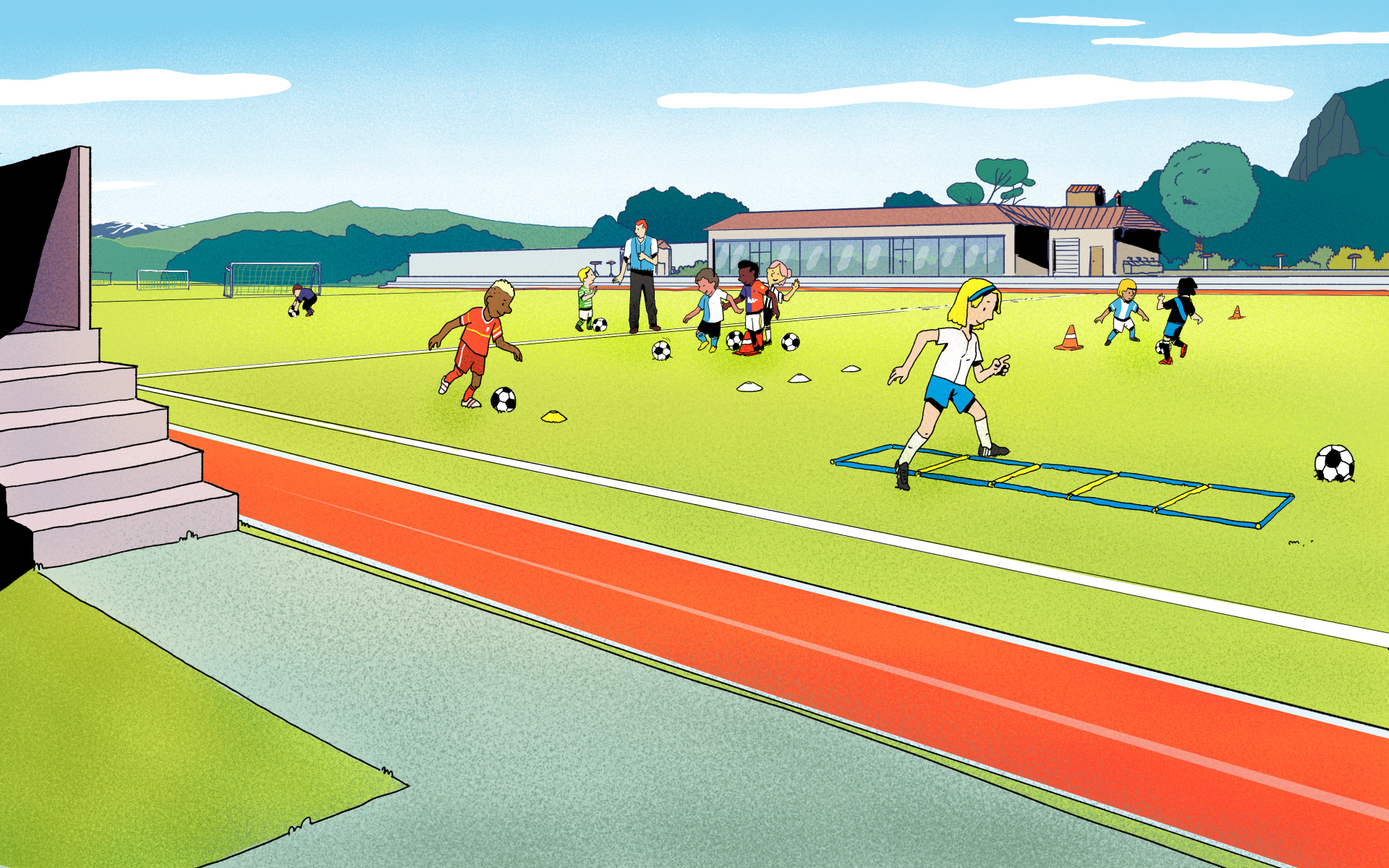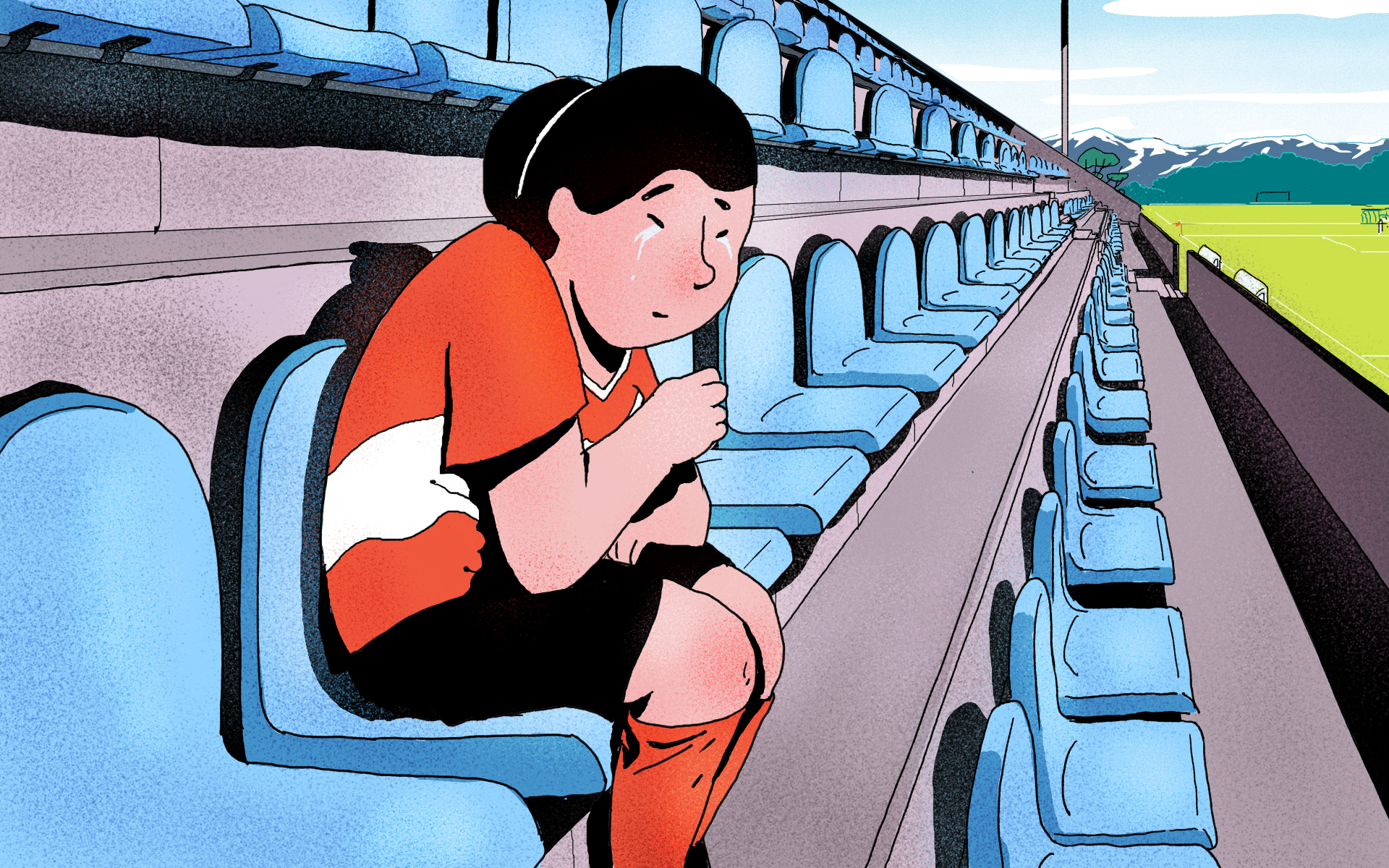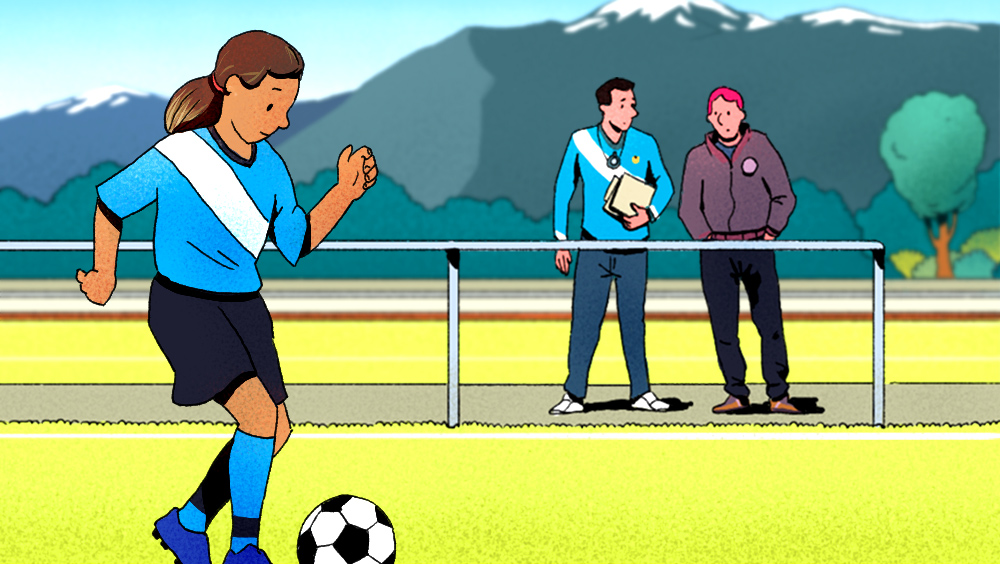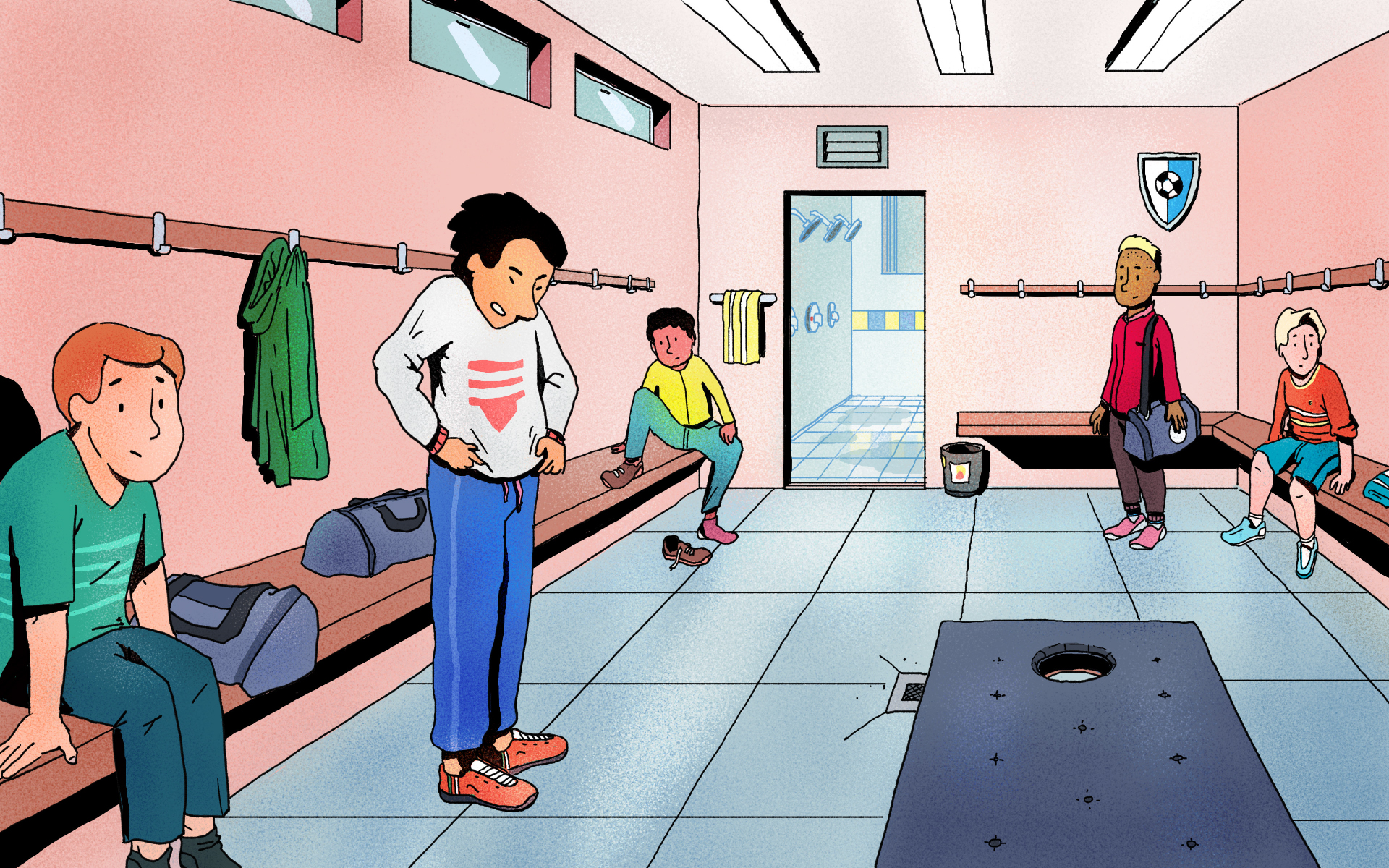UEFA CHILD SAFEGUARDING TOOLKIT
UEFA and Terre des hommes developed a child safeguarding toolkit for European football. With this toolkit we have established guiding principles that will help national associations take measures to protect and safeguard children from abuse and respond to any concerns. Below you will find the full toolkit, as well as its constituent parts shared separately.
These UEFA guidelines set out competition-specific child and youth protection guidance for event organisers, event child safeguarding leads and/or child and youth protection officers when staging competitions and/or events with the participation of…
Awareness-raising is the activity of informing and educating as many people as possible about a topic; in our case, about child and youth safeguarding in football. Through the dissemination of the awareness-raising materials, we wish to improve…
La boîte à outils sur la sauvegarde de l’enfance dans le football européen a été conçue par l’UEFA et Terre des hommes pour aider les associations membres de l’UEFA à protéger et à mettre en garde les enfants contre les abus ou les actes de violence…
Пакет по защите детей в европейском футболе был разработан УЕФА в сотрудничестве с организацией Terre des hommes, чтобы помочь ассоциациям-членам УЕФА защитить и уберечь детей от ненадлежащего обращения и реагировать на возникающие проблемы.…
The child safeguarding toolkit for European football was developed by UEFA and Terre des hommes to help UEFA member associations protect and safeguard children from abuse and respond to any concerns. The toolkit recognises that many…
Das Toolkit zum Kinderschutz im europäischen Fußball wurde von der UEFA und Terre des hommes entwickelt, um die UEFA-Mitgliedsverbände dabei zu unterstützen, Kinder vor Missbrauch zu schützen und auf auftretende Bedenken angemessen zu reagieren.…
The child safeguarding toolkit for European football has been developed by UEFA and Terre des hommes to help national associations take measures to protect and safeguard children from abuse and respond to any concerns. The toolkit recognises that…
This template Child safeguarding policy forms part of the Child safeguarding toolkit for UEFA member associations, in our efforts to support UEFA member associations in actions to safeguarding children. The policy outlines the guiding…
Most children benefit greatly from their involvement in games. Nevertheless, in football, as in any other sport, children may be abused or harmed, irrespective of their age, gender, race, culture, religion, ability or sexual orientation.
Although…
Abuse and harm can occur anywhere, both within and outside the family and club/organisation. Children may be harmed or abused by
professionals, volunteers, carers, family members and other children.
Children can be harmed in many ways, and…
This form can be used to evaluate progress on implementing safeguarding procedures and processes. It is not an audit and should ideally be completed by the child safeguarding focal point, together with other club/organisation staff members…
A general risk assessment should be conducted every year. It aims to identify risks and the necessary actions to reduce or remove them. Conducting a regular risk assessment also helps to implement the child safeguarding policy – depending…
The role of the child safeguarding focal point is critical to an environment where children of all ages and abilities can safely participate in football and have fun. However, this does not mean that the focal point has sole…
The range and quality of football programmes for children would not exist without the time, skills and commitment of staff and volunteers.
Ensuring that the right people are working for football organisations is a key part of creating an…
Codes of conduct are important as they set out expected behaviours. They are more than a list of what can and cannot be done; they are a shared set of agreed and acceptable behaviours that help to create and maintain a positive, fun and…
Codes of conduct are important as they set out expected behaviours. They are more than a list of what can and cannot be done; they are a shared set of agreed and acceptable behaviours that help to create and maintain a positive, fun and…
This sample children’s behaviour code for away trips and other activities is intended to be a guide. Ideally, children should also be consulted about what is acceptable behaviour, as they are more likely to follow the rules if they have…
This is a sample form to obtain permission from parents for their children to take part in activities and trips or media activities.
The template is part of the Child safeguarding toolkit for UEFA member associations.
The medical form should be completed before the child leaves for a long trip or overnight event. It should be kept by the accompanying adults in case of an emergency and must be kept confidential.
In some countries, children cannot be…
Ideally, clubs/organisations should develop a policy for the use of changing facilities and showers to reduce the risk of both child-to-child and adult-to-child misconduct or
abuse. Children are particularly vulnerable in these areas as they…
Travelling to away games and tournaments should be both safe and fun for children. Parents and carers will often worry when their children are away, but careful planning
and preparation should help to ease those worries and demonstrate that you…
Although a general risk assessment should be conducted every year, it is always useful to conduct a risk assessment when there is a specific event, such as an overnight trip or a tournament, as it is likely that there will be particular…
Photographs, films, video clips and social media are a great way to publicise football activities and programmes. They can be used to celebrate achievements, promote
activities and keep people updated. Footage might also be recorded for…
This is a template for a referral form to report safeguarding incidents to outside organisations, such as the police or child protection services. If a referral is made by phone, a referral form should always be subsequently completed and…
This is a sample referral flowchart. These flowcharts are useful to show the pathway to handle cases of concern. It should be adapted by clubs/organisations to reflect the national context and discussions with local child protection…
This form can be used to plan the actions required to meet minimum child safeguarding requirements and to further develop safeguarding procedures. It should be completed annually, but reviewed regularly (every three months is recommended…

